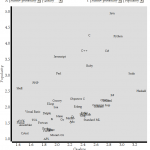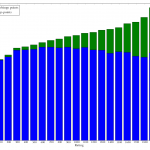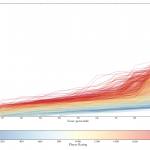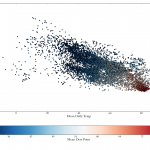In the past few years, the US Supreme Court has handed down a number of high-profile decisions with a 5-4 majority. In the most recent term, these included the two gay-marriage cases Hollingsworth v. Perry and United States v. Windsor, as well as the voting-rights case Shelby County v. Holder. In the previous term there was one that was perhaps even more of a media event: the “Obamacare decision” in National Federation of Independent Business v. Sebelius.
With each 5-4 decision, people start to talk about how many 5-4 decisions there are, and people seem to think there are more of them than there used to be. There’s also talk about the increasing polarization of the court, because (according to the popular wisdom) so many decisions are not just 5-4, but the same 5-4, with the court divided into conservative and liberal factions that regularly vote en bloc. There seems to be a sentiment that these close decisions are somewhat undesirable, because they indicate a fragility in our system of government. (Or, as some might put it, they serve as uncomfortable reminder of how much influence Anthony Kennedy has on the law.)
Is this true? Are there really more 5-4 decisions than there used to be? Is the court really more polarized than it used to be? Every one of these is an. . . interesting question!!!
Read More







